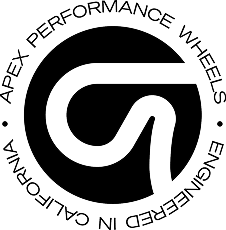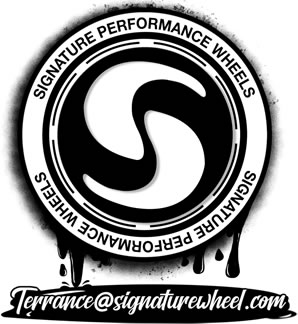I’m pretty sure I read somewhere the calipers are identical and only the pad and rotors were different. I also don’t see how the calipers would be different? Part numbers are different but the CCB calipers are stamped carbon ceramic on the front whereas the standard just say V.Are the part numbers the same? I’d be shocked if the calipers were the same.
Welcome to the Cadillac V-Series Forums!
Navigation
Install the app
How to install the app on iOS
Follow along with the video below to see how to install our site as a web app on your home screen.
Note: This feature may not be available in some browsers.
More options
Style variation
You are using an out of date browser. It may not display this or other websites correctly.
You should upgrade or use an alternative browser.
You should upgrade or use an alternative browser.
CT5-V Carbon Ceramic Brakes and Track Durability
- Thread starter poor-sha
- Start date
CT5-V Model
Head Hunter
Seasoned Member
Didn't get clarification if it's the CT5-V or the CT5-V Blackwing that it's referring to, but during the Brembro Q&A with Ben Pohl, he had a slide stating that the Rear CCB Caliper has a 50% larger pad than the cast iron systems.
Joszer
Seasoned Member
Quite frankly, I didn't think they were worth the money, I replaced the fronts only and got rid of the car shortly after. I replaced it with a ZL1 1LE and the braking performance with the steel brakes was just as good.
There's a minimum weight stamped on the hat to let you know that they're no good anymore, but on these, they met the minimum weight spec however they were no longer smooth.
Hope this helps to let you know what to look out for!
jvp
Seasoned Member
these are the rotors off of my C6 Z06 (with Z07 package) after ~10-12 track days on them. I was able to get a good 2-3 sets of pad in their life. When they start to get towards the end of their life cycle they get pitted on the surfaces. The pitted surface becomes coarse and will shave down your pads like no one's business.
The pitting is from oxidation, and oxidation happens to CC rotors when they hit a certain surface temperature. They're perfectly functional in that state, but as you say: they nuke pads much faster. FWIW I ran the same brakes on my 2010 ZR1 at the track; have LOTS of experience with them.
As Sean notes, tech has progressed. The coating on the CC rotors has improved significantly to deal with higher temperatures. And GM also better understands brake rotor cooling now than they did in the C6 era.
AZHEAT
Active Member
If it were 500 lbs lighter it would be a C7 Z06The 5BW really is an incredible machine, but it isn't my primary track car. Lightning lap uses the Grand Course which really mutes the power advantage and also favors lighter more nimble cars.
Here's a video of me keeping up with a 991 GT3. Granted, I had more track time at VIR which gave me an edge, but still pretty impressive for a 4100 lb sedan.
Great video and thank you for sharing. I only watched the video once and am not qualified to critique, however based on my limited track time it appears that the GT3 driver was far from a newbie. You may have more experience at the track, but you obviously put in some impressive laps running against a very capable car with a good driver. Way to represent!
I don’t think this has been posted here, but I joined a FB group about carbon ceramic brakes and there was a question about the difference between the 5BW and Corvette CCBs. The reply from RB is below, but it explains why I’m seeing good wear and why they also have a min thickness on the rotors.
“They [5BW] are CCBH. They will last longer.
Your experience is exactly why a Silicon Carbide friction layer is better than CCM with no friction layer. After 8 hours of track time, a CCM will show wear.
The Corvette has CCM disc. Rebrake has a process that bind Silicon Carbide friction layer to a CCM disk”
“They [5BW] are CCBH. They will last longer.
Your experience is exactly why a Silicon Carbide friction layer is better than CCM with no friction layer. After 8 hours of track time, a CCM will show wear.
The Corvette has CCM disc. Rebrake has a process that bind Silicon Carbide friction layer to a CCM disk”
Big G Pappy
Seasoned Member
- Joined
- Mar 27, 2025
- Messages
- 62
- Location
- Long Island NY
- V-Series Cadillac(s)?
- '25 CT5-V BW Precision Package Auto, Deep Space Metallic
Great LAP TIMES !!If it were 500 lbs lighter it would be a C7 Z06The 5BW really is an incredible machine, but it isn't my primary track car. Lightning lap uses the Grand Course which really mutes the power advantage and also favors lighter more nimble cars.
Here's a video of me keeping up with a 991 GT3. Granted, I had more track time at VIR which gave me an edge, but still pretty impressive for a 4100 lb sedan.
fordperfaddict
Seasoned Member
what is the brake brandishing procedure? 80 mph down to 20 mph 10 times in a row then let cool? sustain 1 g of braking?
This was the procedure on the GT500 so i am curious if Cadillac CCB is the same
This was the procedure on the GT500 so i am curious if Cadillac CCB is the same
Last edited:
bloominguez
Seasoned Member
Are you allowed to brandish your brakes in Michigan??what is the brake brandishing procedure? 80 mph down to 20 mph 10 times in a row then let cool? sustain 1 g of braking?
This was the procedure on the GT500 so i am curious if Cadillac CCB is the same
MCL - Section 750.234e - Michigan Legislature
nordique14
Seasoned Member
fordperfaddict
Seasoned Member
lol. oops i ment burnishAre you allowed to brandish your brakes in Michigan??
I guess it's not a firearm, so I suppose you could.MCL - Section 750.234e - Michigan Legislature
www.legislature.mi.gov
fordperfaddict
Seasoned Member
interesting on how there are 2 ways of doing it.
It’s all about getting the brake pads hot enough to deposit an even layer of pad material down on the rotor without stopping which would cause a hot spot. Higher speeds means fewer near stops needed to generate the heat. Then you need to drive around without stopping until the brakes cool so the material hardens.
fordperfaddict
Seasoned Member
so when the car is new, it would be smart to do the "street Burnish", then say you tracked the car later in the year, would you have to do another Burnishing process or just 1?
OR is each procedure assuming the brakes are NEW and you are either
a. hitting the streets
b. doing a track day
then Burnish accordingly
OR is each procedure assuming the brakes are NEW and you are either
a. hitting the streets
b. doing a track day
then Burnish accordingly
techdude99
Seasoned Member
All of the interviews that I've seen with the GM Engineers imply iron rotors for frequent track use if cost is a concern. I believe they said the ceramics are more consistent.I realize that conventional wisdom is that CCBs don't hold up to track use, but in the recent tech talk with Brembo they seemed pretty confident in the brakes on the 5BW. I thought I'd start a thread to track how my CCB brakes are holding up to track use.
My car currently has 8390 miles and 6.34 hours of track time on it - mostly VIR and Summit Point main. I run at an advanced pace and don't go on track without the PDR running. I have a macro in Pi Toolbox that populates an Excel spreadsheet with data like session miles, duration, best lap time, etc.
Stock pads are just under 15mm in total thickness with 6.7 mm of backing plate, so you're looking at ~7mm of usable pad material.
My rear pads are the original set on the car and currently measure 12mm total thickness.
I've run two sets of front pads, my first set I replaced after 2.6 hours because I assumed they wouldn't last another 3 days at VIR and had heard not to run CCB pads below half thickness or it'll accelerate rotor wear. In retrospect, that was wrong as confirmed with the Brembo engineer who said to run them until the pad wear sensor comes on and you get to the last ~2mm of pad. Luckily I still have the pads and will put them back on, that set is currently 12mm total thickness.
The second set of front pads have 3.75 hours on them and are also around 12mm thick. This set just had VIR track time on it, whereas the prior set had a bunch of Summit Point time, so that could explain the wear difference.
The real question is how the rotor is going to be and I don't have an answer on that at this point. The rotors looks great, and measuring them with a rotor caliper shows them ~0.6mm above the minimum thickness stamped on the rotor. I have no idea what the new thickness is relative to min, so I can't use that to judge wear.
I share all this to give some data to those of you looking to buy a 5BW and track it. So far, I'll say that I am really impressed with how long the pads are lasting and how well they work. Time will tell on the rotors, and truthfully, I hope I don't have to pay for a new set.
Happy to see all the owners with track time.
If you just do gentle braking on the street, the cold pads can wear away the layer on the rotor you created by burnishing, although mine seems to be holding up well. You can always do it again.so when the car is new, it would be smart to do the "street Burnish", then say you tracked the car later in the year, would you have to do another Burnishing process or just 1?
OR is each procedure assuming the brakes are NEW and you are either
a. hitting the streets
b. doing a track day
then Burnish accordingly
Similar threads
- Replies
- 14
- Views
- 607
- Replies
- 14
- Views
- 1K
- Replies
- 0
- Views
- 135





